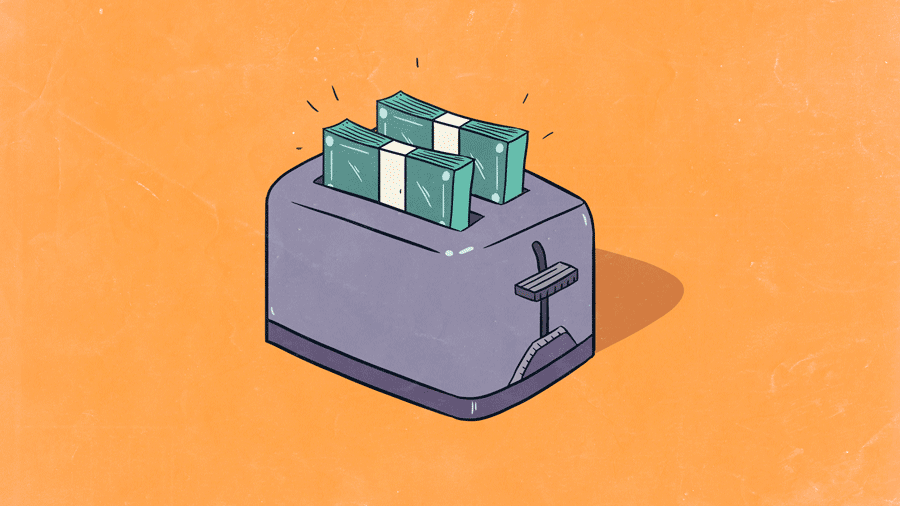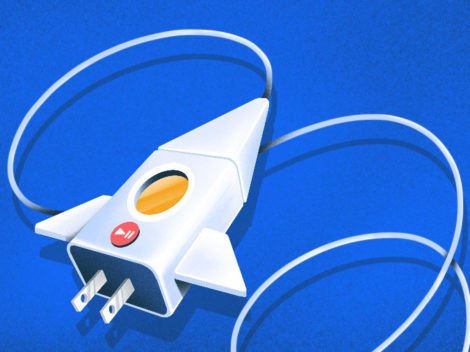Are software companies overvalued? Some dated information caught my eye this weekend, indicating that software companies passed a key valuation threshold a few months ago. Another dataset seems to back it up.
So let’s talk about why valuations matter, briefly, and what we can learn from some easy-to-understand metrics.
Why Valuations Matter
In the past few years, few games in tech have been more fun than tracking the value of recurring revenue.
What is recurring revenue? Modern software companies largely sell their wares on a subscription basis, generating regular incomes from customers over time.
The concept proved revolutionary for the software sector. Before you’d buy a copy of Microsoft Office Home & Student 2007 and it was yours, forever. Now you pay a few dollars a month to Microsoft for access to Office 365, with its assorted cloud bells and whistles.
Over time, the value of this recurring revenue (usually collated into a yearly-sum called “annual recurring revenue” or ARR for short) rose and fell. When it went up, public software companies that sold subscriptions (also called “software as a service” or SaaS) would rise in value. That, in turn, was a boon for software startups busy raising money. After all, if public investors were willing to pay more for each dollar of recurring revenue, ARR-focused startups could stand that much taller.
Therefore, Crunchbase News keeps track of the value of ARR among public companies as it helps us understand what private companies (startups) are worth and why.
All good? Great, let’s get some numbers into the mix.
Old Numbers, Recent Numbers, Today’s Numbers
Over the weekend, I ran into this report from Blossom Street Ventures’ Sammy Abdullah, who said the following regarding a passel of public software companies:
Valuations for SaaS are higher than they’ve ever been since we started keeping track of the data in Q4 2014: of the 77 SaaS companies we follow, the average public SaaS business is trading at 10.07x revenue while the median is 9.32x.
That was back in June, so his data is a smidge out of date. But we can still learn from it and vet it against some other figures.
What is notable in the above is that median SaaS multiples are now over the 9x mark, a very high figure by historical metrics. Indeed, Abdullah charts the median revenue multiple for SaaS companies over time, noting that it was around the 4-5x mark back in late 2015, early 2016.
That implies, roughly, a doubling in the intervening time. He goes on to note that while “SaaS businesses are healthy,” their “[g]rowth doesn’t explain high valuations.” I agree.
So what’s the latest? We can throw some new numbers into the mix, courtesy of our friend, the oft-cited Bessemer Cloud (SaaS, really) Index:
- Median enterprise value/2018 revenue: 9.9x
- Mean enterprise value/2018: revenue: 11.5x
Now, the technical-minded of you are probably crying foul. Don’t worry, Abdullah also used enterprise value/revenue metrics in his calculations. (If you don’t know the difference between enterprise value and market capitalization, don’t worry; in the case of public SaaS companies, they are actually quite close, so we can use them effectively interchangeably in our relaxed analysis).
So what we have from Bessemer is a set of data that mostly matches up with what Abdullah said—if not more extreme.
Holy shit.
Recurring Historical Context
Every so often I bring up a Fred Wilson (USV’s own) post from September, 2011 to show how far things have drifted for SaaS multiples. Wilson wrote the following at the time:
If you have a SAAS business, then your company’s valuation should roughly be 5x this year’s revenues and 4x next year’s revenues. These are for public companies. Investors will typically take a 20-25% discount for private company valuations because private company investments are not liquid. So maybe 4x this year’s revenues and 3x next year’s revenues is an appropriate multiple for a privately held SAAS business.
And that was probably about right! SaaS companies consume lots of cash, tend to have decelerating growth rates, struggle to maintain margins over time, and work in increasingly competitive markets. They are good companies, but they are now valued, en masse, as if they are great companies.
The gap between Wilson’s comments and today’s numbers is just around 7 years and about 100 percent. Wilson was down with a 5x multiple; 10x is a different ball game.
So what Abdullah noted before wasn’t a fluke, other data bears out his work. And that means that SaaS is about as hot as it can be at the moment. Where that puts the potential for more upside, or new downside, is up to you.

Stay up to date with recent funding rounds, acquisitions, and more with the Crunchbase Daily.





![Illustration of stopwatch - AI [Dom Guzman]](https://news.crunchbase.com/wp-content/uploads/Halftime-AI-1-300x168.jpg)




67.1K Followers